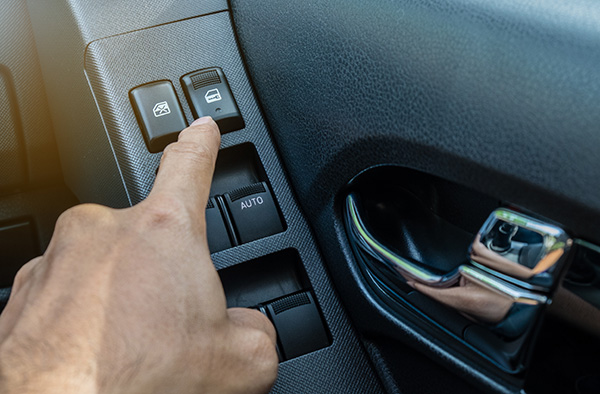
Dealing with malfunctioning power windows can be frustrating, especially when you’re in a rush or dealing with inclement weather. One moment, your windows are working perfectly, and the next, they’re stuck—either refusing to go up, down, or simply not responding at all. Understanding why this happens is the first step toward getting them fixed. Let’s explore some of the most common reasons why your car's power windows might not be working and what you can do about it.
Electrical Issues
One of the most common reasons for power window failure is an electrical issue. Since power windows rely on a series of electrical circuits, switches, and fuses, even a minor disruption in this system can cause the windows to stop working.
A blown fuse is often the culprit. Fuses protect your car’s electrical components from overload by breaking the circuit if there’s too much current. If a fuse associated with the power windows blows, the windows will stop functioning. Replacing a blown fuse is relatively simple and inexpensive, but it’s crucial to determine why the fuse blew in the first place. It could be a sign of a larger electrical problem.
Another potential issue is a faulty window switch. The switches you press to raise or lower your windows can wear out over time, especially if they’re used frequently. A malfunctioning switch might not send the correct signals to the window motor, resulting in the window getting stuck in one position. You might notice that the switch feels different—either loose or unusually stiff—or that pressing it doesn’t produce the usual clicking sound.
Window Motor and Regulator Problems
If the electrical components check out, the next likely cause of your power window problem is the window motor or regulator. These parts work together to move the window up and down. The window motor powers the regulator, which is a mechanical assembly that physically moves the window.
Over time, the motor can wear out, especially if it’s been working hard to move a sticky or misaligned window. When the motor fails, you might hear a faint clicking sound when you press the window switch, but the window won’t move. In some cases, the window might move slowly or get stuck partway.
The regulator, on the other hand, can become misaligned or break altogether. If you hear a grinding noise when trying to operate the window, or if the window falls into the door and won’t stay up, the regulator is likely the issue. Replacing a window regulator can be more involved and may require disassembling the door panel, but it’s a necessary repair to restore full window function.
Wiring Issues
Wiring problems are another possible reason why your power windows aren’t working. The wires that connect the window switch to the motor and other components run through the car’s doors, where they can become pinched, frayed, or broken over time. This is especially true if the door is opened and closed frequently, which can put stress on the wiring harness.
When a wire is damaged, the electrical signal from the switch may not reach the motor, leaving the window stuck. Diagnosing wiring issues can be tricky, as it requires tracing the wiring path and checking for continuity. In some cases, the damaged section of the wire can be repaired, but if the damage is extensive, replacing the entire wiring harness might be necessary.
Mechanical Obstructions
While electrical and mechanical failures are the most common reasons for power window problems, don’t overlook the possibility of a physical obstruction. Dirt, debris, or even ice can get lodged in the window tracks, preventing the window from moving smoothly. If the obstruction is severe enough, it can cause the motor to strain or the regulator to become misaligned.
To check for obstructions, carefully inspect the window tracks and remove any visible debris. Be cautious if you suspect ice, as forcing the window could damage the motor or regulator. Instead, allow the ice to melt before attempting to operate the window.
Environmental Factors
Environmental factors can also play a role in power window issues. Extreme cold can cause the windows to freeze in place, making them difficult or impossible to move. In hot climates, the heat can cause the rubber seals around the windows to expand, creating resistance that the motor might struggle to overcome.
Over time, the seals and weatherstripping around the windows can become worn or damaged, allowing water to seep in. Moisture can corrode the electrical components, such as the switches or motor, leading to malfunction. Regularly inspecting and maintaining these seals can help prevent environmental damage and keep your power windows functioning smoothly.
Preventing Power Window Problems
Regular maintenance is key to avoiding future issues with your power windows. Periodically checking the fuses, switches, and wiring can help catch potential problems early. Lubricating the window tracks and ensuring the seals are in good condition can also reduce wear and tear on the motor and regulator.
If you notice any signs of trouble, such as slow-moving windows, unusual noises, or intermittent operation, it’s best to address them promptly. Ignoring these warning signs can lead to more extensive—and expensive—repairs down the road.
Are your car’s power windows giving you trouble? Dave's Automotive can help. Schedule a visit now and ensure your windows are functioning perfectly for a hassle-free driving experience.